Saturday began cloudy, but the sun shone by midday.
Our day started with fitness in the hotel's stylish gym.
My online research identified an ideal place to have breakfast: Zenith Brunch & Cocktails. Lewis and I are friends with a former coworker who grew up in Spain. He's well-acquainted with Madrid and Valencia, and he gave his opinion on the places we intended to visit. His name is Simón (pronounced "See-moan") with emphasis placed on the second syllable. Yet, his approvals reminded me of the children's game, "Simon Says": e.g. Simón says to go to this restaurant; Simón says to avoid that gallery; Simón says to climb that tower for a view. Ha ha! :-)
Simón said that we should definitely have brunch at Zenith. It's the most popular brunch place in Madrid. Similar to the "breakfast restaurants" we went to Berlin and Dublin, it serves a breakfast menu all day—every day. It opened in 2019 in the Malasaña neighborhood, which is easy to get to because its perimeter is surrounded by 10 Metro stations.
From the station near our hotel, we zoomed north the Gran Via Station, which is a marvel of immaculate modernity. It has automated gates that are illuminated spiffily. For New Yorkers like us who still use turnstiles, it seemed futuristic!
The station is named for the thoroughfare aboveground: Gran Via (Great Way). It's similar to Manhattan's Broadway and is full of plazas and theaters. It was created between 1910 and 1929 (just before the global Great Depression that was caused by the financial depravity of America's banks in NYC).
Zenith is situated on a one-way cobblestone lane.
We didn't have a reservation, and thankfully there was no queue. The staff was young and includesd every racial demographic. The front room has sofas and deuces that face a counter where the bartender, barista, and cashier work. The next room is rectangular: communal tables and tables-for-four. At the back, the interior makes a U-turn at the kitchen and reveals another dining area. We were promptly greeted by young Asian man with glasses. Since the restaurant was full, he asked if we were okay to sit at a communal table? Certainly! As we sat, the two lesbians at the other end paid their bill and left. So, we a table for ourselves anyway.
I like the zesty taste of shakshuka (a North African recipe of baked eggs in simmered peppers and tomatoes), so I got that. Spain's proximity to Africa means that plenty of African—especially Moroccan—dishes were adopted. It was served from the oven in a metal skillet with slices of toasted baguette. Lewis ordered their famously-fluffy pancakes, topped with a fried egg. It was coated with a piquant gravy that tasted like rosemary and peppers. Yummy! We each drank glasses of fresh-squeezed orange juice, and I sipped a latte. Outside of the USA (beyond its corrupt chemicalized dairy industry), we can enjoy non-GMO cow's milk that doesn't make our stomachs gurgle. It was delicious and creamy!
Unlike American cafes, notice that nobody focused on laptops or devices; they focused on their food and conversation... like normal people. The hubbub gave a vibrancy that was perfect to start our day! We never waited for service because the staff abundant was observant. Food industry workers outside of the USA are paid a livable wage (with Universal Healthcare from their governments), so they don't rely on tips... so they don't rush customers to eat-and-leave to "flip tables". Life/Work Balance for everybody. We paid €36 for our nourishing meal.
At the next corner, we noticed the eye-catching decor at Madrid's hottest gay bar: Boyberry. As its sign says, it claims to have the best glory-holes, cruising maze, and sex cabins in the capital.
Unabashed accessibility seems to contribute to a Life/Work Balance.
On the topic of accessibility, there was a bus stop (for those mini buses) across from the bar.
We returned to the Metro station.
We rode the #5 train to Opera Station, which is named for the nearby Royal Theatre... which is actually an Opera House built in 1850. The station had an amazingly clean floor, and we admired the e-charging sockets that were free for anybody to use. Great infrastructure!
Edges of the platform were elegantly made of marble. Spiffy!
We ascended to the street and wandered towards the palace. The entire administrative district is named Palace. On our way, we spotted several appealing sweetshops. We decided to visit them after our tour of the palace.
It's the largest functioning palace in Europe: double the size of Buckingham Palace. With 135,000 square-meters, it has twice the floor space as the Palace of Versailles, which it was inspired from. In the images below, notice the size of the cars in comparison to the palace.
Every day of the year, the palace is protected by troops of the Royal Guard, which was formed in 1504. How many organizations do you know that still exist after 519 years?
Tourism webpages promote the Changing of the Guard ceremony at the Royal Palace on Wednesdays and Saturdays at 11:00. They imply the type of pageantry that occurs every day in London. When it happens in Madrid, it looks like this...
I will tell you the truth: it happens once a month. For the remaining days, the "changing of the guard" is literally that: guards change places. No parade. No marching band. But we didn't know that until we got there. Instantly, I saw that visitors weren't lining up for anything. Evidently, they knew that nothing was happening.
That was a letdown. Why can't all palaces have reliable ceremonies like England or Czechia? *To see when we witnessed the Changing of the Guard for Buckingham Palace, please use this link: https://halfwindsorfullthrottle.blogspot.com/2022/09/our-return-to-london-uk-part-2-of-6.html
*To see the Changing of the Guard at the gargantuan Prague Castle in Czechia, please use this link:
https://halfwindsorfullthrottle.blogspot.com/2024/04/our-trip-to-prague-czechia-part-2-of-9.html
Nonetheless, we knew that Spain's royal guards did something, so we tried to find out about it. Lewis approached a guard by the Royal Collections Gallery. He understood English, but he decided to make us wait while he puffed on his cigarette, and then he only gave answers in Spanish.
Making a face of ingratitude, Lewis walked away from him. Next, I suggested asking the professionals in the Tourist Information booth. However, the woman merely said that the guards changed at the palace's Prince's Gate. She neglected to mention that there was no ceremony. So, we went there and saw four guardsmen: two on horseback, and two foot guards.
They wore uniforms unchanged since the 1820s.
But, they only stood there facing the few tourists who photographed them. Unlike the royal guards in Copenhagen, they didn't pace back-and-forth. Unlike in Oslo, they didn't talk to visitors. Unlike the royal guards at Windsor Castle, they didn't patrol the grounds. They remained still. We overheard someone explain that they waited until four new guards arrived to switch places. We didn't need photos of that.
Before our trip, we pre-purchased tickets for self-guided tours of the palace. Anticipating a Guard ceremony, we chose a later time-slot. Now we had an hour to spare, so we agilely decided to return to the Opera House area and buy sweets as souvenirs. We entered Turrones Casa 1880.
Turrón is a type of nougat made of honey, sugar, egg whites, and toasted almonds. Spain is famous for great almonds and honey. The recipe was brought to Spain in the 1400s by Arabs. The company was founded in 1725 by Bautista Sirvent, and it remains family-owned after 12 generations!
The shop specializes in products made with soft turrón, when the almonds are made into a paste of marzipan. Lewis and I love marzipan, so that was the perfect confectionary for us!
The brand "1880" is named for the year that the recipe was written.
In addition to logs of luscious marzipan, we bought boxes of handmade Almond Crumble Cakes for our coworkers. (They remained intact during our flight).
They are delicious, with a lovely texture that melts in your mouth. As you bite into each "cake" (cookie), it crumbles into a bit of powder. Ingredients include whole wheat flour, extra virgin olive oil (from Andalucia), and pulverized almonds. We prefer the ones flavored with pistachios.
We bought bars of white chocolate, made with strawberries, organic honey, and Spanish gin, as gifts to our favorite baristas at home. The chocolates are shaped like honeycomb.
After growing up in America's consumerism and working in retail for many years, Lewis and I despise Black Friday. To learn about it, please use this link... https://halfwindsorfullthrottle.blogspot.com/2015/04/why-do-you-keeping-making-them-rich.html
We arrived back at the palace punctually. Lewis posed for photos in front of the Cathedral of Saint Mary: the Royal of the Almudena. It overlooks the royal park.
During our first visit to Madrid, we toured its interior and marveled at the colorful ceiling, ornate pipe organ, and pretty stained glass windows. Gorgeous!
The structure was begun "recently" in 1883 because Spain's Catholic headquarters remained in the City of Toledo since the 7th century, and it didn't want to relocate—even though the royals moved from Toledo to Madrid in 1561. However, by 1950, it was still incomplete, and the site was abandoned during the Civil War.
It was finally finished in 1993. It may not be full of worshippers as intended, but it is magnificent. To entertain visitors in the plaza, it had exterior speakers emanating uplifting choir music. That created an apropos atmosphere. On-time, the church bells tolled and told the time. Those are beautiful sounds that we don't hear often in NYC because of Noise Laws against church bells.
Visitors for the palace gathered at the Plaza de la Armeria, which is sandwiched between the cathedral and the palace.
Gawking at the long queue to buy tickets, we were glad that we got ours online: €12 each. There was a separate entrance for ticket holders, and there was no queue! Yay!
After a security bag-check, a guard scanned our e-tickets, and we were invited to keep our belongings in a locker. Similar to Oslo, the locker area was staffed by a palace employee for convenience and safety. Unlike Berlin, it didn't stupidly rely on coins (which few people carry); it used a punch-button code.
Our admission price included audio guides, which were very helpful and entertainingly articulate. We began by photographing the forecourt. Please enjoy my panoramic video...
The palace has a long history that's as fascinating as its inhabitants. After the Fall of the Roman Empire, the Iberian Peninsula was populated by several kingdoms. In the 800s, Castile began as a county within a kingdom. Ferdinand the Great was the Count of Castile and the King of Leon. By the 1100s, Castile achieved enough mightiness to proclaim itself as its own kingdom. Its ongoing success spread its language throughout the Iberian Peninsula, as a “building block” of the Spanish language. The Crown of Castile funded Christopher Columbus’ explorations of the New World (Caribbean) in 1492, the conquest of the Aztec Empire in Central America, the defeat of the Inca Empire in South America, colonization of North America against Native American tribes, and the invasion of the Philippines (an Asian archipelago-nation on the other side of the planet)… making Castile a global empire.
The Pope enriched himself by decreeing that Spain had God's blessing to conquer those nations, and "the labor from native people" was awarded to Spain. The Roman Catholic Church created ecclesiastical positions in the New World to establish tax-free properties, collect donations from “new believers”, and infiltrate local politics. The Spanish conquest of the Americas from 1492 to 1550 was the world’s largest genocide in history: millions of indigenous people died from large-scale massacres and European diseases. The native population in the conquered areas totaled 80 million inhabitants, but 70 million died. A Catholic archbishop named Juan Rodriguez de Fonseca controlled the Spanish agency that managed expeditions to the New World.
The era of “Habsburg Spain” refers to the dynasties of Austrian heritage who were rulers from 1516 until 1700. During that era, Spain controlled almost all of Central America and South America, one-third of the USA, the West Indies (Caribbean), half of the Netherlands, Belgium, Luxembourg, France, segments of Italy, Portugal, parts of North Africa, the Philippines, and other islands in Southeast Asia.
King Philip II sustained the infamous Spanish Armada: a fleet that was undefeated around the world until a storm battered it as it tried to attack England (and England thereafter claimed it as a famous victory). He also sustained the notorious Spanish Inquisition: a bloodbath used to eliminate rivals, homosexuals, powerful/educated women, other religions, anyone who disagreed with the Catholic Church, whistleblowers, scientists, and educators.
Due to their greed for consolidating power, the Habsburgs were notorious for inbreeding, so birth defects were an affliction that diminished their bloodline. The most famous deformity was nicknamed the “Habsburg jaw”. Ongoing wars drained the treasury, and wartime taxes were uncollected. Pirates looted their colonies and galleons. Spain’s bloated bureaucracy was larcenous, and colonists revolted. Spanish society associated social status with pure leisure, so work/careers were considered undignified for aristocrats. (France’s nobility had the same affliction; both regimes ended similarly). The Roman Catholic Church owned 20% of the land in Spain, and it never paid taxes. It’s 200,000 members of clergy sought only to enrich the Church that was headquartered in Rome and do the Pope’s bidding.
Due to inbred deformities, King Charles II of the Spanish Empire died childless in 1700 at the young age of 38.
Until then, clueless physicians gave his long-suffering wife several primitive fertility treatments that damaged her organs, and they compelled him to sleep alongside the exhumed body of his dead father.
Two claimants battled for the Throne: a Bourbon prince named Philip of Anjou (of the French royal family)...
... and Archduke Charles of the Austrian branch of the Hapsburg Dynasty. The House of Bourbon was founded in 1272. It produced Kings of France for two centuries, starting in 1553, declining when King Louis XIV built Versailles in the 1660s, and ending when Louis XVI was beheaded by his starving people in 1793. The House of Bourbon still exists and is headed by Prince Louis, the current Duke of Anjou (seen below).
The will of King Charles II gave the Throne to Philip (his grand-nephew), but Europeans detested the idea of France and Spain being ruled by the same clan because it offset a balance of power. A Grand Alliance of armies united to fight Philip via a Nine Years War. It was initiated by King William III of Great Britain (and the stadtholder of the Netherlands), and it involved a confusing array of alliances. Britain captured Gibraltar, but Philip won the War of Spanish Succession and became King Philip V of Spain. To unify his realm, he combined the Crown of Castile and the Crown of Aragon into the Kingdom of Spain and he reduced regional (duplicitous) parliaments.
He was born at Versailles (seen below) in 1683, so he brought its stifling etiquette and flouncy protocols.
However, he differed from French administrators by stopping aristocratic men from dominating the government. Instead, he installed 200 talented men and later rewarded them with noble titles. Philip established a nationwide postal service that still thrives. His lesbian daughter married the Holy Roman Emperor to secure an alliance. Philip vastly improved judicial processes, taxation, and the military, and he revamped ministries that were isolated/corrupt. His spies diagnosed that Spanish-America (South America, Central America, and half of the USA) was inefficiently and incompetently run by American-born Spaniards who festered hatred against Peninsular-born Spaniards. Alas, Philip died at age 62, and his effete son was unfit to rule. (In 1758, he became suicidal and died within a year). Philip is considered the most successful ruler of Spain. He is esteemed as highly as Frederick the Great in the Kingdom of Prussia (now Germany). *To see when we visited Frederick's former palace in Germany, please use this link: https://halfwindsorfullthrottle.blogspot.com/2022/11/our-trip-to-berlin-germany-part-3-of-6.html
Lewis posed handsomely inside one of the guard huts.
Glancing up at the flagpole atop the palace, we didn't see the Royal Standard flapping in the breeze...
...so we knew that the Spanish Royal Family wasn't inside. In fact, they do not reside there. Their Majesties use a "country estate" in Madrid as their royal residence. That might be because King Felipe's father did the same thing... and that might be because he got embroiled in indictments for philandering and obscure financial gains from Arab nations. King Juan Carols abdicated, separated from his wife, and exiled himself to the Arab Peninsula. The Dowager Queen remains in Spain doing charitable duties. That makes sense since she relocated from Greece and changed her religion to be part of Spain's monarchy. Her loyalty remains in Spain.
The current king married a commoner named Letizia who had a remarkable career as an overseas-correspondent and reporter.
Many people like that type of "royal access equality". If you don't, remain quiet. The honor of the Spanish Royal Family is protected from slander and insults by a law within the Spanish Penal Code.
His Majesty's ancestor was the last king before Spain abolished its monarchy. In 1931, King Alfonso XIII was deposed by a coup, and Spain became a republic under the dictatorship of General Francisco Franco.
Corruption scandals ensued (similar to when Soviets overthrew the Russian czar and promptly took his luxuries for themselves). The Nazi dictator, Adolf Hitler, supported Franco, yet Franco remained in power after Hitler died during World War Two. Franco posed as a defender of Catholicism, so the Church favored him… despite his countless violations of human rights. Despite being a dictator, Franco lived in the Royal Palace of El Pardo and groomed a Spanish prince to be his successor. Prince Juan Carlos was born in 1938 to a Spanish count (heir to King Alfonso XIII) and a Spanish princess. In 1969, Franco named him as his “heir-apparent”, yet Juan Carlos secretly met with banished politicians who wanted reforms. Franco died in 1975, and Juan Carlos ended that regime with his own enthronement. The restoration of the monarchy was earth-shattering news.
The “Royal Household of His Majesty the King” is a constitutional organization of courtiers that support the monarch’s duties, decrees, and royal prerogatives and they manage the royal treasury and archives. The King is the Head of State and the Commander-in-Chief of the Armed Forces. He oversees the Prime Minister and the Council of Ministers (the executive branch of government that began in the 1400s). His Majesty personally appoints each courtier, without approval from the government. King Felipe is very popular.
In Spain, the heir-to-the-throne is known as the Prince of Asturias. The current Princess of Asturias is an 18-year-old named Leonor. The King’s teenage daughter is already enrolled at a military academy as part of her three-year military service.
At the main entrance, a docent opened the door for us. Visitors are treated nicely to enter the same way that horse-pulled carriages, limousines, and dignitaries enter.
We proceeded up the grand staircase.
Considering its age, we were impressed with its appearance. The palace is maintained by a governmental agency named National Heritage. It takes care of possessions of the Crown’s legacy: 21 royal palaces and monasteries, 154,000 pieces of priceless art, forests, and lush gardens.
During the Middle Ages, the site was a Muslim fortress. In the 1000s, Castilian kings evicted them and built over the fortress for their own castle. The castle was named El Casa.
It expanded through the centuries, as it lost fortifications and gained comfort, and it metamorphosed into a palace. On New Year’s Eve of 1734, it burned down. That's a terrible way to start the year, but Spain’s first Bourbon king—Philip V—decreed that a new palace would rise from the ashes on the exact site. 11 meters underground, the first stone was laid in 1738 “for all eternity”. He modeled it on his birthplace: the Palace of Versailles. Seen below, that French palace...
...clearly gave inspiration for the Spanish one.
Please watch my panoramic video of the facade...
Imagine coming home to that!
It looks similar to Versailles, but the Spanish king made it bigger by doubling the size. He was married to an Italian who brought excellent artisans from her native kingdom. The best architect in Europe was hired: Filip Havara from Italy. Alas, he died before the construction began, so Giovanni Batiste Zachheti carried out his plans. Requiring 17 years to build, their masterpiece was large enough for the royal family, the royal court, and all the ministerial offices of the king’s government. On top of the mammoth building, the bell tower has the original bells from the El Casa that weren't destroyed in the fire.
In 1764, the king’s son was the first monarch to reside there: King Charles III. A statue of him is in the foyer, dressed as Roman emperor to indicate Spain’s exceptional rulers. He was fondly respected by his people. A statue of King Charles IV is also dressed as a Roman emperor from antiquity, and that ongoing “costuming” was intended to add legitimacy to their dynasty.
The shallow steps of the staircase allowed for “grand graceful entrances”. Each step is one piece of Spanish marble. Two lion statues "watch" the stairs (and the people on them).
Ceiling frescos depict the Spanish monarchy of the 1700s being elevated to heaven.
That was akin to France's monarch claiming to be the Sun King: a god-like ruler from heaven. The gallery often has musicians to perform fanfares and chamber music for arriving guests. On that topic, the royal anthem is Royal March, and it is also the national anthem of Spain. Composed in 1761, it's one of four anthems in the world that doesn't have lyrics. For centuries, there was a false myth that it was composed by Frederick the Great, the openly-gay king of Prussia, who was a mastermind of engineering, warfare, and a music-lover.
We ascended the double-staircase and admired all angles of the room's grandeur. Evidently, the palace is one of the most Instagramable places in the world.
The next room was used by the royal guards during the prior century.
The Hall of Columns has a soaring ceiling and was created for music and dancing during State Banquets. Please enjoy Lewis' panoramic video...
It’s now used for royal receptions and concerts. It’s where the current king accepted the abdication of his father. Large tapestries (of apostles) add color to the space.
From there, we entered a room that was part of the original "King’s Apartments” (clusters of rooms for him). It was an anteroom where the King breakfasted amongst his courtiers: a public display to make attendees feel privileged. (Since those courtiers had nothing important to do, it gave them something to brag about). It’s lavishness was intended to pacify courtiers with something to look at as they spent hours there while the king ate his eggs and ham.
Next, the King’s Supper Room was nicknamed the Conversation Room because it was used for informal chats before suppertime. Its lush blue/gold motif was installed in the 1820s. In winter, the walls were covered with tapestries to insulate against cold air. In summer, the tapestries were replaced with portraits. Now, portraits of King Charles IV and Queen Marie (from Parma) are there, and they show a simplicity of apparel and style that was the royal couple’s true preference.
A visual "explosion" of Rococo flair fills the next room, from floor to ceiling. Everything is white and gold. Chinoiserie is the main theme because it was popular in that era, due to respect and fascination with ancient China that they finally had contact with. Doing business with China was so desirable that Europeans tried sailing northeast over Norway and also across Atlantic—intending to sail west around the world—to get there. Kings sent envoys over the world's tallest peaks of the Himalayan Mountains and sent ships all the way around the southern tip of Africa—then sailing past Arabia and India—to get to China: the Celestial Kingdom.
The Italian genius, Matia Gasporini, took 55 years to complete the decorating! That’s a lifetime job!
The room is unaltered from that time. Everything has manmade intricacy: chairs, inlaid floors, inlaid furniture, wall coverings, fireplace, clocks, and doorframes. We were flabbergasted!
Seen below on the mantle of the fireplace, the Shepherd’s Clock is the most valuable in the kingdom’s collection of 700+ timepieces.
The stunning mechanics allow different elements to move and play various songs at different times of the day! It is massively impressive for its era—before electricity was invented. After more than 260 years, it still functions! A pair of children teetertotter on a seesaw. Animated fingers of a young man move as he plays his clarinet! A carousel of figurines exit the clock and do a parade to be seen. The filigree is astonishing.
It was assembled by a Swiss clockmaker named Jaquet Grows. He knew that Spain's King Ferdinand VI was a fan of automatons.
So, he journeyed 1,600 miles from Switzerland's mountains to show his best creations, and the king bought all three.
Lewis led me into the next chamber: Charles III's bedroom. On December 14 1788, Charles III died in that bedroom. When his grandson became the King of Spain, he decorated it with motifs of the knighthood that he initiated/dedicated to Charles III.
The highest chivalric orders of knighthood in the kingdom are the Order of the Golden Fleece, the Order of Charles III, and the Order of Isabella the Catholic. The King is the head of all of them, and his privilege is that he may confer a knighthood on whomever he wishes.
The next room was smaller but filled with vivid porcelain tiles that covered the walls, corners, and ceiling. Each hangs separately and can be removed for maintenance, but when they are all in-place, they give the room a spectacular effect!
During the Spanish Civil War, they were removed and hidden for safety. The colorful panels depict nymphs frolicking amidst urns of fruits, vines, and cornucopia horns.
Similar to the Porcelain Room that we saw at Berlin’s Charlotteburg Palace, it demonstrates Europe’s adoration of porcelain—which originated in ancient China. For centuries, nobody in Europe knew how to make porcelain. For eons, only the wise Chinese knew the exact amounts of ingredients to use, how to mix them, the precise temperature to bake the clay, and for how long. European royals traded their high-tech mechanical clocks to Chinese emperors, so they could get sturdy porcelain.
From the 1500s to 1700s, royal couples in Europe slept in separate bedchambers. That was usually because they were forced to be married for national alliances. So, they maintained separate romances in different bedrooms. An entire suite of rooms was initially the Queen’s Apartments. Now they are used as reception rooms, formal dining room, and an anteroom for an orchestra. We began in a yellow-hued chamber that is famous for its intricately-made French furniture (made by a carpenter who worked at Versailles) during the reign of Charles IV.
That segued to the double-length dining room, replete with a humongous table (40 meters long) and hundreds of chairs. Ten chandeliers are needed to illuminate the vast space. In 1879, King Alfonse XII (who was born in the palace) decided to stop using the Hall of Columns for banqueting...
...and he remodeled the Queen’s Apartments and joined three rooms into the new State Dining Room. The separate ceilings still signify the original layout.
Spanish designers abided by Neo-Baroque “French style” that was still popular across Europe. The floor marquetry represents the “height of fashion” for that era. Abiding by French etiquette, the current King and Queen still sit across from each other in the middle of the table. (Despite what Hollywood depicts fictionally, a host and hostess never sat at each end of the long table).
Woven in Brussels in the 1550s, the tapestries are the oldest in the palace.
A cavalcade of voices erupted as an Italian tour group arrived, so we knew to stay ahead of them so we could enjoy the majestic surroundings in peace. (Had the guide spoken in English, we might've eavesdropped to learn some tidbits).
We segued to the room where servants and musicians are positioned during banquets. Whenever the palace is open for tours, the room is used to display the Royal Family’s silverware, stemware, china, candelabra, and pedestals for centerpieces. Three rooms were full of exquisite (but hard to clean) objects.
By the 1700s, Spanish monarchs had accumulated a horde of silver objects. But the next king sold most of it to provide funding during the War of Spanish Succession, which he won. Only a few originals survive. Of interest to us were the antique trays/cups used for the presentation of hot chocolate.
All types of chocolate were rare and pricey in that era, and hot chocolate was a delicacy. Therefore, it was served with genteel flourishes. Many of the current pieces were fashioned in the world-famous Madrid Silver Workshop. It was common to melt-down old silver objects to make new ones, so that is another reason why few of the oldest antiques exist.
After that, we viewed the courtyard in the center of the palace. The main level seems utilitarian because it was used by parliamentarians, secretariats, and governmental ministries. Above them, the royal family and its courtiers worked-and-lived. The upper level (with the lowest ceilings) was occupied by live-in servants and guardsmen.
Lewis and I explored the Royal Chapel. It's immense, and its dome is evocative of the Vatican's. Marble was quarried in the Basque region. The pipe organ was made in the 1700s and still provides perfect-pitch music. Being devout Catholics, the royals attended mass daily. Spanish monarchs were never Head of the Church of Spain because the Catholic Church was always headed by the Pope in Rome.
Devout Catholics only account for 16.8% of the population. The same quantity of Spaniards are atheists. 14% believe in a “divine being/beings” and could be polytheistic (as ancient civilizations were until Christianization). After centuries of papal persecution and banishments, Judaism has less than 0.2% of the population (Jews are happy elsewhere). 2% are Buddhist or Taoist.
A highlight of our tour was seeing four rare musical masterpieces up-close! In the 1600s, the Italian city of Verona was world-famous for high-quality instruments. A mastermind named Antonio Stradivari created string instruments with unrivaled qualities. He was born in 1644 (just before Spain colonized California) and lived until 1737. His "Golden Period" began when he was 56. His are the most beautiful instruments in the world and make the purest sounds. If you are fortunate to own or play one of them, you say that you have "a Stradivarius". Due to their rarity, the value of any of those masterpieces always exceeds $2 million. Astoundingly, the Spanish Royal Family has four of the handmade creations! Two violins, one viola, and a cello. Stradivari probably looks down from heaven and smiles that four of his precious instruments are united—and still used! The Queen sponsors concerts in the palace, and the world’s best musicians crave a chance to play with them. I was awed and honored to see each Stradivarius! So exciting!!
The next room featured authentic royal regalia that was used for several centuries: crowns, scepters, orbs, documents, and chains of chivalric orders.
That crown is the one that appears on governmental logos.
The Sphinx Table is one of the palace’s finest items that is regularly used for significant signatures.
A small room with vaulted ceiling evoked ancient Roman villas. Constructed in 1791, it used the Pompeii style because Pompeii had just been unearthed.
The next dark-blue room is used by diplomats and ambassadors who must legally provide their credentials to His Majesty before they can work in Spain.
An exuberant scarlet room is next, decorated with richly-hued tapestries and Rococo tables. It is used for Press Conferences. A triple-level chandelier glimmered overhead. Heavy red velvet drapes, tied back with beefy gold chords and tassels, adorned each doorway.
Full of effervescent grandiosity, the Throne Room was the finale. Unlike the layout of the one that we entered at Buckingham Palace, the Spanish thrones were not facing us. They were against the side wall.
Enormous mirrors add additional depth, and two huge crystal chandeliers brighten the crimson upholstery. Life-size statues stand on plinths. Funnily, a statue holding a baby is by the entrance, so the first things that guests see is the baby's butt. Ha ha!
The ceiling is frescoed with heavenly scenes. Four statues embody the virtues of Justice, Prudence, Fortitude, and Temperance.
A pair of thrones is “protected” by four lion statues on the lower steps. Lions by thrones reminded us of the motif used in the Kingdom of Denmark.
It is the only room to retain its original appearance since it was completed in 1772! Nothing was modified. The Throne Room is used every year for official audiences with the monarch, military investitures, and “Kissing the Hand of the King": a ceremony when civilians greet their King and Queen.
We were guided back to the grand staircase, where a new throng of visitors clamored. At the exit, I saw a royal guardsman taking a coffee break. Looking resplendent in his uniform, he saw me and correctly assumed that I wanted to pose for a photo beside him. Gallantly, he hid his coffee, straightened his tunic, and posed proudly with me. It compensated for no guard ceremony!
Our gratitude extended to the Palace Gift Shop, where we successfully found mementos.
*As I said, that palace was inspired by Versailles. But to see when we toured a nation's royal palace that was deliberately not made like Versailles, please use this link:
https://halfwindsorfullthrottle.blogspot.com/2023/08/our-trip-to-oslo-norway-karl-johan.html
After retrieving our bags, we ventured to a wondrous boulangerie (bread maker) & patisserie (pastry maker) in the middle of the city. It is named Santa Eulalia, and it occupies a historic building that is painted yellow.
It sits on a section of ancient Roman walls, and you can view them through glass panels in the floor! Impressive!
A glass wall behind the food counter lets you view the pastry chefs doing their work, and that is also impressive.
I was wowed by the handmade creations that exuded real talent.
When I saw the perfect layers of delicate croissant dough, it seemed like I was in heaven!
Despite living in America's richest city, we can't easily find them. Throughout the vastness of America, croissants are usually badly-made with cheap methods so they look like plump unshaped blobs that cost twice as much as Europe's.
One of the chefs noticed the intensity of my admiration. He came out of his kitchen and introduced himself as Chef Jose Alberto Trabanco. He was trained at the prestigious cooking school, Le Cordon Bleu, in Paris. I complimented his clever recipes, and we discussed the art of baking.
He sensed my sincerity. With a sparkle in his eyes, he fetched his newest creation: a millie-feuille made of chocolate, with dark-chocolate mousse and thickly-gelled custard, topped with mocha icing that was interspersed with handmade marmalade and berry preserves. I was amazed!
It was so new that he hadn't posted a photo of it on his Instagram page yet. I was the first customer to see it, and he GAVE IT TO ME! No charge. I gushed with gratitude. As if we were longtime friends, we also talked about his crescent-shaped almond/spice cookies. Five years ago, his apprentice gave him the recipe, which came from her Croatian grandmother. They tweaked the ingredients to include coconut shavings and vanilla, and those cookies remained on the menu thereafter.
I bought one of those, as well as a tart.
Chef Trabanco said, "Please, my friend, see whatever else you might want, and give your order to the cashier. I will bring my pastry to your table as a gift to you."
Our table faced the barista counter. A tall window made the room bright. The beamed ceiling, rusticated brick walls, and plank flooring were handsome.
Lewis chose a panna cotta made with plum jam and lavender. He drank freshly-squeezed orange juice, while I imbibed an expertly-crafted cortado. Everything was delivered to our table. Outside of America, you don't have to wait near the cashier for your food. We consumed every crumb; everything was heavenly!
Chef Trabanco came out of the kitchen to hear our assessment, and our honesty delighted him. Then, he and Lewis discussed seafood restaurants in the city. We mentioned our dinner reservations at CEBO. It's near the chef's home, but he hadn't dined there yet. He will soon. When he learned that half of our trip would be in Valencia, he summoned his colleague, Pedro—who is Valencian—to explain that we should bypass paella in Madrid and only have it there. Chef Trabanco was intent to illustrate the telltale signs of perfect paella: made-to-order, a cooking time of at least 20-minutes, charred edges, dry consistency, and flat. The flat part was very important. With a measuring stick, he demonstrated how low the rice should be. He also warned us to avoid eateries with glossy signs outside on the sidewalk.
Thrilled with our chummy interactions, we parted ways and wished each other farewell. It's wonderful when you connect with locals. You never know what unexpected blessings will arise.
Walking to our hotel, we saw several of Spain's pillar mailboxes, painted in an unmistakable yellow color. Newer ones are blue and yellow.
Near our hotel, we noticed that there was a sex shop ("adult toys and entertainment") across the street. It was quite popular.
Beyond the USA (supposedly a land of freedom), sex toy shops are not taboo and not restricted to troublesome neighborhoods. (Despite its overpopulation density, all of Manhattan only has three! Of 3,143 counties in the USA, Queens County has the 12th-highest population, yet it only has 3 sex shops. Madrid has half the population of NYC, and it has 15). Sex and self-pleasuring are considered normal in civilized societies, so the stores are given prominent placement near attorney offices, grocers, pharmacies, and gyms. Belover is a well-known brand, and their advertising was already aimed at Christmas. A greeter was positioned at the door to answer questions and direct customers, and plenty of people—of all ages—browsed the spacious store. Life/Work Balance.
We changed clothes at the hotel and walked to the Teatro La Latina. That theatre is in the La Latina neighborhood of the Palace district. It has a vibrant "gay culture". Yet, unlike American cities, Spanish ones don't have "gayborhoods" because gay people live everywhere and don't feel compelled to cling together in one area.
We had tickets to see the musical version of Legally Blonde.
It's based on a popular Hollywood film from 2001 that referenced many topics: equality, women in the workplace, sexual harassment, bimbos, masturbation, love for all body types, determination, "don't judge a book by its cover", and people can develop new talents to improve themselves.
The theater showed signs of care and maintenance. Americans who overpay to attend a Broadway musical in NYC can only hope for a theater as clean or well-kept as that one.
Typical of theaters outside of NYC, there was generous legroom. For Spaniards, that is normal. People in NYC suffer from restricted space because greedy theater owners squeeze-in as many seats as possible to make profits. Uniformed ushers scanned our e-tickets and ushered us to our seats. Lewis was thrilled because we had great views of the stage. We had prime seats, in the first row of the mezzanine—in the center... and we only paid $50 each.
That's impossible in greedy NYC, where those types of seats are overpriced at $180-250 each. (To grab more money, NYC also charges more for front rows of the mezzanine than the others). Furthermore, American theaters overcharge customers with additional fees: Processing Fees, Facility Fees, and Convenience Fee (for online purchases) that accumulate to $18-$30 per ticket. None of that happens in Spain, where its society prioritizes performances to be accessible. Life/Work Balance. [That's why we stopped wasting money for shows in NYC. We attend the theatre in other countries: better service, nicer facilities, equally-great performers, and lower prices].
The cast and crew did a marvelous job! The plot told a timeless message of perseverance. We admired the cleverness needed to add songs, so the film's storyline became a musical. Naturally, the show was spoken and sung entirely in Spanish. Our familiarity with the film helped us understand the plot, yet the entertaining acting and singing conveyed everything clearly. It was a joy to watch!
After the delightful show, we sauntered arm-in-arm to our dinner reservations. The plazas and squares were still brimming with people. Flowers were being sold everywhere. Evidently, people buy bouquets on their homeward commutes, and to give to whomever they meet for dinner.
We enjoyed the orderly pleasantries that happened on the narrow lanes. Most people went to tapas bars and wine bars. We noticed something different from the conversations overheard at bars in NYC: people didn't curse as much, didn't seem angry or annoyed, and didn't sound like they were complaining about their days or about their lives. Small details tell huge amounts about a society.
Street cleaners swept the pavement (we never see that in the evenings in NYC), and their uniforms were very clean (we never see that in NYC, either).
A bottleneck of traffic occurred on the medieval lane, but none of the drivers honked their horn aggressively, or flashed their headlights, or yelled out the window, or tried to drive up on the curb to go around someone (as happens every day in the USA). It was surreal for us simply watch humans behaving decently—with patience.
A bonus was the sight of a motorcyclist with shapely legs (and tush) who moved at the same pace that we did. A visual delight. When we reached the next traffic roundabout, Lewis and I waited at the crosswalk, and he parked beside us, flexed his thighs, removed his helmet, and flashed his brown eyes at us. He probably appreciated our glances, and that was his way of showing it.
We arrived at CEBO Restaurant, situated in the sleek 5-star Urban Hotel. Seen below, the hotel is a cutting-edge property. It is next to the embassies for Mexico and Georgia. The entrance features unusual artwork.
We admired its stylish Lobby Bar, with a back-lit alabaster wall and white-jacketed waiters.
On the left, we saw the entrance to the restaurant. CEBO is famous. Chefs Javier Sanz and Juan Sahuquillo are responsible for the successful culinary creations that tantalize customers from around the globe. (Simón said it was a "great find" for dinner)!
It was also awarded with a Michelin Star, which is exciting!
A hostess welcomed us and took our coats. We asked to use the lavatory to clean our hands, and she graciously escorted us to ones near the Lobby Bar. They might be unisex, but mine had a captivating photo of a bare-chested man wearing speedos.
An elegant fellow named Yassine Khazzari introduced himself as the jefe de sala (dining room manager). This is him.
He spoke gently to a colleague, and she walked ahead of him as he guided us to our table. The stylish restaurant was half-full.
To our delight, we were ensconced in a glass-walled room, where the walls were used to store wine bottles.
Yassine and his colleague held our chairs for us, draped napkins in our laps, and poured water into our goblets. He indicated where we could see into the kitchen to watch the action. He also confirmed that Lewis and I intended to enjoy the Chef's Tasting Menu: €145 each. After walking 6.1 miles during the day, we had eager appetites. That made him smile. With élan, Yassine visited us throughout our dining experience to ensure that everything was perfect. It was.
Our waiter was a bright-eyed young man who described every detail of each course so that it tantalized our tastebuds. His accent enhanced each description.
When we desired wine, Marisa appeared; she was the most competent sommelier you can imagine.
Like athletes discussing their playbook, she "huddled" with Lewis and discussed the wine list. Together they agreed on a €40 Verdejo made by an organic winery named Caraballas. It is 170 kilometers north of the capital and encompasses 145 hectares.
Our dinner began with two delectable items...
Carefully prepared, the pork croquette was our favorite. In 2021, it was voted "The Best Croquette in the World". Understandably, they kept it on the menu: sheep's milk and butter from the Calaveruela Cheese Farm (family-owned for three generations for artisanal goodies), Joselito ham chopped in brunois, and a panko batter gave a crunchy texture. To be whimsical, it was served in a bowl of acorns.
The second morsel was Acorn-fed Pork that was shredded and formed in to a patty—sandwiched between two delicate wafers that tasted like pork cracklings. They melted in our mouths, and their flavor was enhanced with a fortified wine sauce.
Then, we were served Blunt Tomato (grown in the chef's garden) with Vegetable Dashi.
To complement it, two servers poured glasses of tomato juice (from the same organic garden). The purity and richness of flavor surprised us! Wonderful!
Our tablecloth was crumbed, and a food-runner provided the creamiest butter and as much sliced bread as we desired. The bread was handmade in-house. Every slice was moist, warm from the oven, and had the perfect chewiness. I liked the pumpernickel version the best.
Razor clams (collected by divers in the sea) were served with a tiny-but-tasty Potato and Seaweed Gazpachuelo.
After that, we ate Smoked Sturgeon.
Seasoned raw Shrimp, with a shrimp sauce ladled on top.
Hook Squid with True-blue Iberian cream poured over it.
Boletus Pinicola (pinewood mushrooms) with wild Rabbit glaze.
Stewed Beef tendon with a slim carrot.
Elvers (eels) caught in the Mino River, with Cod skin sauce.
Blackbelly Monkfish cooked delicately and coated with an exquisite Seafood Stew that is famous in the Basque region.
Wild Blue Lobster prepared on aged Carnaroli Rice.
Quail breasts with Cabbage sauce and Oyster Mushrooms, with a fritter filled with a stew made from quail thigh meat.
Matured Beef with bourguignon sauce.
As a palate cleanser, we had fresh Goat Milk gelato over oxidized Corn served in a chilled (hand-spun ceramic) bowl.
Roasted Galician chestnuts with Iberian Torrezno.
We finished with Petit Fours and Pastries from the Pastry Chef.
Our meal totaled €334.00, including a suggested gratuity of €30.36. It was worth every Euro!
When we departed, it was nearly midnight, yet the cozy alleys and byways were bustling with cheery people. Wonderful vibes. Please enjoy my video of the scene...
It was equally lovely to be in a city where we could merely stroll through safe streets to our hotel.
The next day, our agenda began with an ancient Egyptian temple that Lewis was excited to see. It was built by King Adikhalamani in 200 BC for the king of the gods (and chief deity of the Egyptian Empire), named Amun. In the 1970s, it was gifted to Spain by Egypt as thanks for their infrastructure support. Located in Parque del Oeste (West Park), the Temple of Debod is free for anyone to see, but there is often a queue to enter. We rode the immaculate Metro to Plaza de Espana.
A mighty-looking skyscraper resembled the Empire State Building in NYC.
(The USA boasts that it never had an empire, yet its wealthiest city is in New York State, which is officially nicknamed The Empire State. That slogan is embossed on NYS license plates).
We had a tranquil walk through the park. Autumn leaves glinted in yellowish colors, and some fell via curlicues to the gravel paths.
The pretty scenery was the only thing that comforted us during the long wait to enter.
Unfortunately, the queue was grossly mismanaged by uncaring guards and clueless docents. They only allowed six visitors to enter at a time. Stupidly, they waited for all six to leave before allowing anyone else inside. So, if six enter and five leave within a few minutes, they still waited for the sixth person to exit—even if that wasted another 10 minutes. That is idiotic. Furthermore, those imbeciles didn’t pay attention to when everyone was gone, and—eventually—docents peeked outside to gesture for guards to let more people in. There were only 35 people ahead of us in the queue, but we waited for one hour and fifteen minutes! 1.25 hours is deplorable for 35 people to enter an exhibit.
There were hieroglyphics in the central room, and we were glad that we saw them.
Alas, both of the side rooms are empty and barren. There was a small room upstairs, but the docents prevented us from going up because the last of two people had not exited. By that time, we were due for our brunch reservations, so Lewis decided to skip it. In a ruefully sarcastic way, the woman said, “Oh, you are in a hurry.” Her tone seemed to criticize us for not spending more time there. With caustic sarcasm, I glared at her eyes and said, “No, that is wrong. We had plenty of time when we arrived, but you wasted an hour of it before we could enter.” Her mouth opened—perhaps shocked that somebody with a brain reprimanded her unprofessionalism. We don’t recommend that “attraction”—regardless if it’s free. (During our trip, we noticed several instances where people who seem to have government-placed jobs don’t care about their careers).
We returned to the plaza and went to a Taxi-Stand (we love that convenient infrastructure). The driver sped us across the city...
... to the five-star Rosewood Villa Magna Hotel in the urbane Salamanca District. Surrounded by gardens, it is the most emblematic luxury hotel in the capital. It is located on Madrid's main avenue, Paseo de la Castellana, on the site of a palace from 1840 where Spanish counts and countesses lived. It's near the embassies for the Kingdom of Belgium, Lebanon, the island-nation of Haiti, and the Baltic nation of Estonia.
Situated on a hill, the towering rectangular building looked imposing (154 rooms), but the entrance was tranquil and the interior was plush. Two reflecting-pools with fountains were at the entrance, and a doorman wearing a gray overcoat and derby opened the car's door. Another one held the front door open to the hotel.
We were excited to enter a place of epicurean and cultural excellence. We crossed the lobby, admired the stained-glass windows, and proceeded to a restaurant named Las Brasas de Castellana.
We had reservations for the best brunch in the city! Las Brasas is world-renown for serving authentic Spanish cuisine with elegance. Costing €110.00 each, it was the most tasteful and abundant buffet we had in a long time: unlimited food and beverages of the highest quality. Spread across several rooms, the “brunch experience” was utterly luxurious! A jazz quartet performed upbeat songs that were made popular by Ray Charles: keyboard (which added sounds of brass and string instruments, as well as an electric organ), bass, guitar, and drums. Please enjoy Lewis' video of that scene...
Gas-fed fireplaces added ambiance. A sunny terrace was available through French doors along the main rooms. Wearing neckties and vests, six servers ensured that every whim for each guest was fulfilled. Two dining room captains graciously oversaw everything. The hotel's Executive Chef is Francisco Sanabria, who previously worked at two-and-three-Michelin-starred restaurants in Tokyo and Barcelona.
I started my meal with freshly-shucked Sorlut oysters. Oysters cultivated by-hand by Daniel Sorlut are highly-coveted because they are firm and meaty. All of the requisite condiments were available (sherry vinegar, tartar sauce, shallots, hot sauce, and segments of lemon), but I loved the pure flavor of each plump oyster!
Lewis began with giant prawns and mussels, cooked on the half-shell. An unobtrusive waiter attended to us, and he spoke elegantly. Gracefully, he offered us a “welcome drink” and politely reminded us that it was included in the prepaid price. Pre-chilled wine glasses were provided from a silver tray, and he added ice cubes. The drink recipe included citrus sparkling wine, grapefruit juice, and Spanish white vermouth. It was delightfully refreshing! I had two. Our waiter indicated that we could request as much wine and sparkling varieties as we wanted. At a nearby table, a man (who ate alone), requested to taste all of the red wines—to choose his favorite—and a waitress dutifully provided separate glasses and poured amounts of each. Such service!
Lewis was thrilled with the selection of pâté, goose foie gras, micuit (partially cooked duck foie gras that is whipped into a smooth bloc)...
...and pâté en croute.
Silver bowls were filled with bread-crisps, toasted brioche, grisines, Glass Bread (a traditional Catalan recipe), and breadsticks. Silver platters were loaded with slices of baked eggs flavored with cheese.
One of my favorite things was prepared by a woman at the Beef Tartare station. Spain has one of the best "meat cultures" in the world, and anything made with beef produced in Spain's Galicia region is excellent. A silver bowl of high-quality ground/marinated sirloin and fillet-mignon rested in a larger bowl of ice. The elegant presentation was mouthwatering. Whenever I arrived, the woman mixed a portion with raw egg yolks and spooned-in garnishes of Worcestershire sauce, mustard, capers, and cracked pepper. I was astonished by the deliciousness. Honestly, it was the best recipe of Beef Tartare that I ever had. I had three portions!
A gentleman at a nearby table heard my praise and smiled to himself; he knew that I found excellence.
Another buffet was a cornucopia of fish mousse "cakes”, salads, fresh-from-the-vine tomatoes and handmade mozzarella, and gazpacho. A counter was full of croissants, pan au chocolate, and snecken that the hotel’s artisanal baker made in the morning.
Lewis and I were enamored with the jamón carving station. It was the highlight! First of all—and most significant—jamón is nothing like ham. They don’t look alike, and jamón tastes much better. This is what ham looks like...
Pork is popular on the Iberian Peninsula, and one of Madrid’s delicacies is Jamón Ibérico: a prized ham that comes from purebred Black Iberian pigs.
Spain’s Ministry of Agriculture, Fisheries, and Food regulates it strictly, so it won the European Union’s elite Protected Designation of Origin label.
It is the dry-cured leg of a pig.
Many gastropubs, restaurants, and food halls feature several legs dangling from the ceiling as "proof of quality".
The legs are longer and thinner than breeds of pigs of lower quality. For example, Jamón Serrano (from the Sierra Mountains) is similar, but it doesn’t have the same intensity or legal assurances. Jamón Ibérico is prepared by letting pigs roam freely in organic pastures and ancient groves of oak trees, so they eat nutritious grasses, herbs, roots, chestnuts, and acorns. Acorns are the key ingredient. Many menus boast that their jamón comes from acorn-fed pigs. When the time for slaughtering approaches (and the abattoir sharpens his blades), their diet is focused on chestnuts and acorns.
The butchered meat is covered with salt for a few weeks. During winter, it is hung to dry for eight weeks in storerooms with open windows, so the mountain air circulates around them.
That pure process existed for one thousand years. There is no shortcut. The curing process requires one year. Two years is better… but four years is preferential. As the seasons change from spring to summer, the meat changes: it starts to sweat. Half of the weight is lost as fat drips away. A thin layer of mold forms, but that protects the meat inside. (Similar methods are used for aging cheeses). The salt protects the meat from bacteria, while a metamorphosis occurs inside. The fat disintegrates, and the pig’s diet of antioxidants in the acorns changes the fat into healthy mono-unsaturated fat (like olive oil). During each successive winter, the meat gets dryer and more complex with flavor.
It is not salty like bacon. Instead, the meat melts in your mouth with a cornucopia of savory tastes: nutty, richness, and a touch of sweetness. In my opinion, the darker portions have the best intensity of flavors because they come from “endurance muscles”, so they are well-marbled.
Jamón Ibérico is one of the best meats in the world, comparable to Kobe beef from Japan. As a breed of pig, Pata Negra is the undisputed "king of jamón", and it's one of the most valuable culinary products in the world. That's what the Rosewood Hotel served us. Naturally, we were excited to try it! Seen below, a beautiful leg of Pata Negra was presented in a specialized holder.
In Spain, there is also an importance to carving it because each segment has a unique flavor.
Using the precision of a royal barber, a man shaved paper-thin slivers of the succulent meat. They were so thin that they were translucent.
The meat has a smooth texture. As I said, it “melts in your mouth”. I ate it by itself; no condiments, sauce, bread, or cheese was needed. Each mouthful was sheer perfection of a time-honored classic! Lewis and I consumed four plates of it. Each time that I returned for another plate, the man who carved it gave me a smile with satisfaction. (That was national pride).
Meanwhile, the man carving beef smiled every time that Lewis visited him for more steak with sautéed mushrooms. He ladled a generous amount of red wine gravy on it.
As you might imagine, our waiter kept-up with our pace: resetting our table, replacing utensils, refilling water, and replenishing ice cubes.
Whenever I got more food, I appreciated the uptempo music. I snapped my fingers to the beat, and the musicians and I exchanged smiles. Trollies were parked in various places, full of bottles of wine, with silver trays of appropriate stemware. Anyone could pour themselves a drink. It was a great atmosphere.
There was a bar that dispensed freshly-squeezed juices, nectars, teas, and espresso drinks. Our waiter appeared with an ice bucket and tongs to add ice cubes to our drinks. (He was very observant). A waitress inquired if we wanted any specific recipes from the kitchen (made-to-order)? Lewis requested Eggs Benedict.
In another room, we surveyed an assortment of deluxe cheeses. Spain is one of the best countries to get well-made cheeses from. Cubes of quince paste were provided, alongside crackers and dates. The loaves of bread were delectable—aroma, style of crust, chewiness, and taste—so we cut slices for ourselves with the thickness that we desired.
I paused at a trolley that had a silver punchbowl, and several bottles of white wine were nestled in the ice. I inspected the labels and poured a lovely Albarino. It tasted divine. I got one for Lewis, too. Nobody rushed us, and we were encouraged by the dining room captain to indulge ourselves for as long as the brunch was offered.
The musicians resumed with groovy tunes. Content with the savory menu, we segued to the sweet stuff. An abundance of hand-crafted goodies filled an entire room! They were all made by Pastry Chef Emanuel Alvés and his pastry team, who are renown as one of the best groups in the kingdom.
Chocolate confections, macarons, “profiterole trees”, cakes, tarts, pies, entremets, pastries, cookies, and marzipan. A long table was laden with platters loaded with sliced fruit. We tried the lemon meringue, red velvet cake in “red-lacquer” chocolate, carrot cake “baton”, palmiers, pear galette, citrus rind dipped in dark chocolate, fruit gelees, white chocolate bonbons, sticky cinnamon bun, and apricot/brandy tart. Please enjoy my panoramic—and mouthwatering—videos!
We made three trips back-and-forth to that room. (Perhaps, we should’ve moved our table closer! Ha ha!) Using tongs, Lewis broke off a chunk of white chocolate “bark” that was embedded with pulverized pistachios. From a trolley, I cut myself a slice of layer cake flavored with pumpkin, vanilla cream, and cinnamon. I filled a plate with glorious-looking entremets. At that moment, a profiterole fell off its tree and rolled to my fingertips. It was a sign from heaven, so I added it to my plate. Everything was marvelous!
Our waiter did a fine job of keeping our table clean and reset with silverware. He was astute to keep our water goblets full, and he refreshed our napkins with clean ones. When he saw us enjoying dessert, he suavely offered us a digestive espresso. I accepted. Of course, it was perfect.
Lewis preferred a digestive liqueur, so a waitress wheeled the trolley closer so they could discuss options. He chose a brandy. Our two-hour brunch passed at a languid pace, and we loved it. We tasted the essence of Spain through that afternoon’s seafood, jamon, cheese, wine, and pastries. It was a blissful experience. The staff performed excellently, yet no gratuity was expected. We highly recommend the Rosewood's vibrant brilliance, and it is a huge value for €110 per person.
*Americans probably expected that meal to cost hundreds of dollars (while the restaurant’ employees were underpaid without getting medical benefits). That’s a typical scenario in the USA. In Spain, restaurant employees are paid a livable wage and get Universal Healthcare from the government (no extra deduction from their paychecks). It’s wonderful.
Feeling content, we meandered and burned calories as we absorbed the urban beauty.
We encountered an elegant shopping center named Galleria Canalejas, and its doorman was attired in a grey cape and hat. Enjoy my panoramic video of its facade...
It outclassed the filthy crap at Macy's on Herald Square, as well as the cluttered crap outside of Saks Fifth Avenue.
We admired the sleek interior—especially the Art Deco staircase. Lots of people enjoyed posing for photos there.
On the top level, we discovered a fragrance section.
The courteous salesgirl patiently guided Lewis to discover a new fragrance for the upcoming season. He took time to decide, but she acted as if he was her sole priority. Helping people develop a fondness for a fragrance requires patience and fortitude. But when they were done, she actually gave us a compliment. “You guys are the nicest customers we had all day. You’re very easy to deal with.” To show her gratitude, she gifted us with several free samples of other luxury fragrances. The young woman admitted that she is usually less-generous with customers, but we delighted her so we got twice as much. (If you put out goodness, it comes back to you).
We refreshed at our hotel and changed clothes before “showtime”. We had tickets to see a second show in Spain. The Metro took us to the Santo Domingo Station. Please enjoy my video of the colorful mural in the station...
We emerged on a thoroughfare named Gran Via, in the Theatre District. Similar to London's West End, it is much nicer than NYC's overhyped Broadway.
We went to the Teatro EDP Gran Via for a musical version of Pretty Woman.
We chose another adaptation of a Hollywood film because we were familiar with the plot. Once again, the theatre was handsome and showed signs of careful upkeep. We sat in the first-ring with centerstage views, and the total cost of both seats was €72.00. No extra fees. We loved that affordable value!
The show was amazing, and the performers exuded vivacious skills! One actor played multiple roles: the skillful hotel manager, a disheveled punk, a flamboyant retail manger, and the crooner at a dinner/dancing restaurant. The swishy bellboy was another talented actor who made a memorable impression on the audience.
The cast portrayed the scene where snooty retail employees at a boutique on Beverly Hill's Rodeo Drive disregard the prostitute. Outside of Arab nations and America, that snobby behavior isn't done anymore, so modern generations of people didn't understand why it happened. If you watch that movie from 1990, the way that the prostitute is dressed looks like how most customers dress nowadays at luxury retailers.

When we left the theatre, the city's Christmas lights were lit over the street. It was very pretty. Nothing like that exists in NYC.
*To see more of Spain's fanciful lights, please use this link: https://halfwindsorfullthrottle.blogspot.com/2023/12/this-is-spain-lit-and-decorated-for.html
The service was still exceptionally courteous and efficient. We like that type of consistency. Everyone seemed happy: customers chatted under fringed umbrellas, and vested bar-runners carried cocktails on silver trays.
We sat in a glass-roofed pavilion, with a five-branch candelabrum full of flicking candles in the corner.
We both ordered the cocktail made with gin, chartreuse, bergamot, and basil, and I enjoyed the sound of the bartender’s cocktail shaker nearby. A vested man carried them to us on a shiny tray. Before he departed, we ordered a second round of the same drinks... and that made him smile. We were thirsty.
Our dinner commenced with a plate of mortadella, a bowl of pitted Spanish olives, and breadsticks. Our waitress presented a wooden tray with four types of freshly-baked bread.
Loving their handmade pasta, we shared Pappardelle with Partridge. (I love kitchens that serve "wild game meat"). We also shared Seafood Risotto, layered with langoustines. Smartly, the captain had the portions split onto two plates.
From the menu, I was tempted by the Pheasant Lasagna, but I decided upon Beef Tenderloin cooked in Barolo sauce, topped with a lobe of seared foie gras and served with wok-fried veggies. Lewis had his own segment of seared foie gras that came on his Monkfish. Perfection!
We eschewed the wine list because we wanted to finish the bottle in our hotel’s fridge. A white-jacketed food-runner used decorum to present our food, and the dining room captain ensured that everything was satisfying. It truly was. How could you be unhappy in such a splendid setting? The cost was €257.50.
Most late-night dinners in NYC are dampened by late-night transit delays, reroutes, or cancellations. We were thrilled that Spain's Metro remained reliable and orderly: working elevators that didn't smell like urine, working escalators, and working trains.







,_interior_03.jpg)
,_interior_05.jpg)

















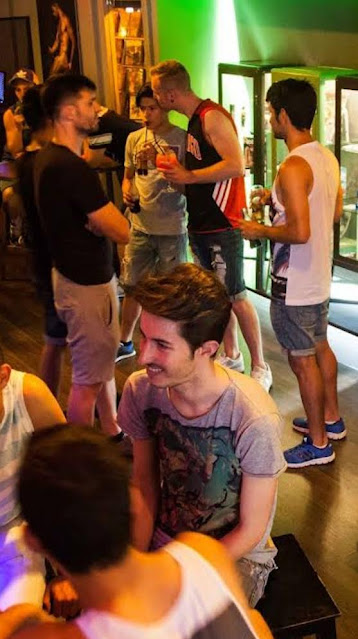








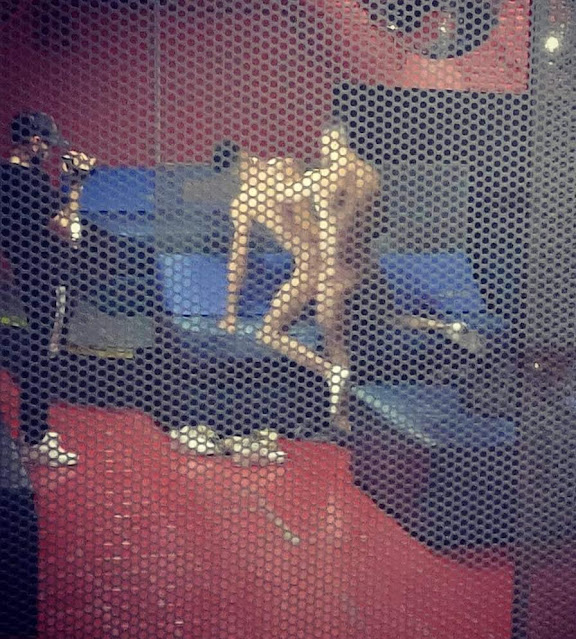











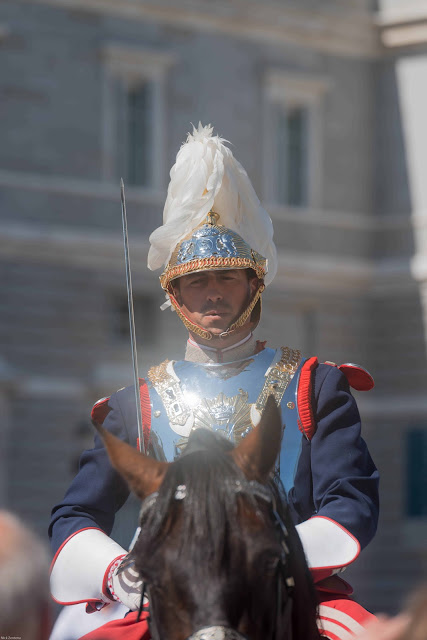




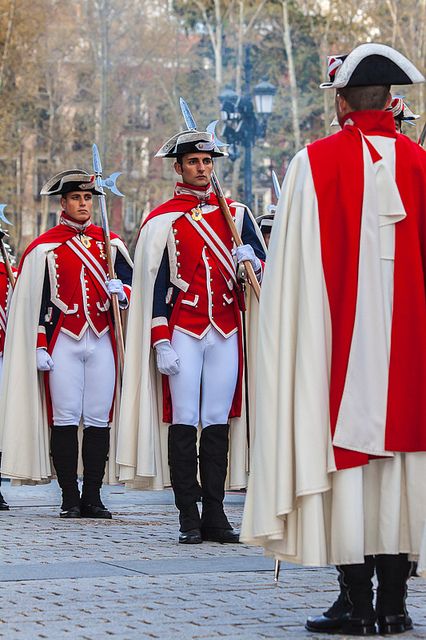










































.jpg)




.jpg)








.jpg)










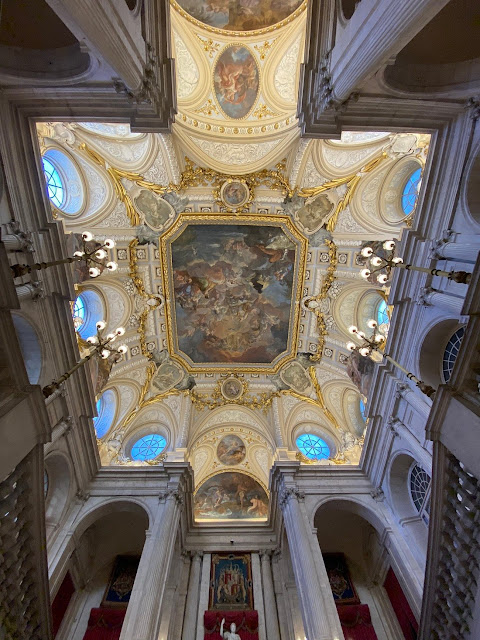



.jpg)


















































.JPG)


































































































.jpg)

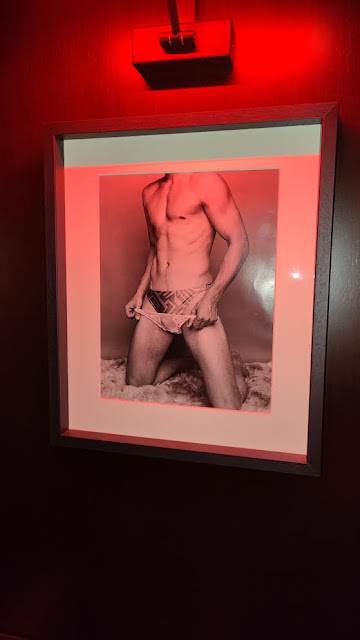






















































































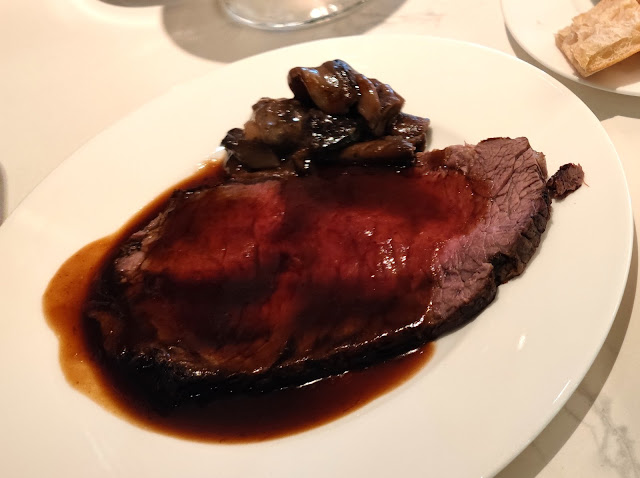


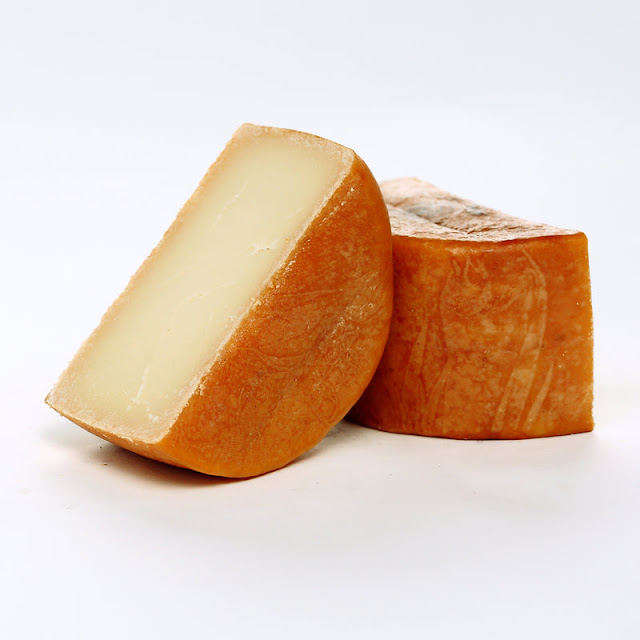


.svg.png)




_in_Spain.svg.png)










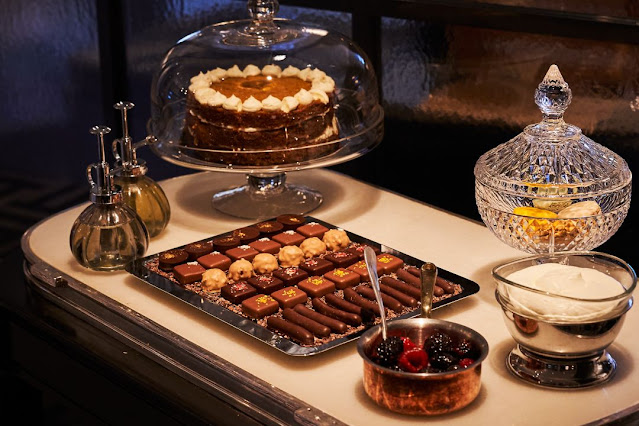





























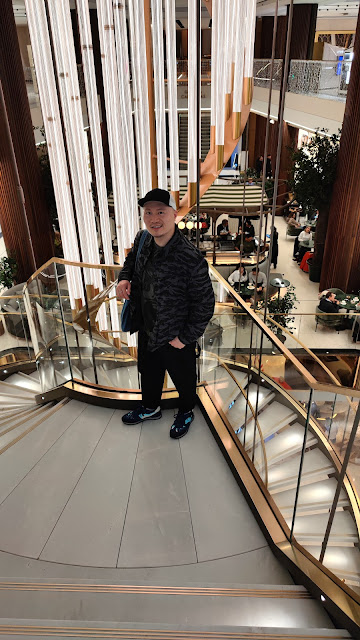






























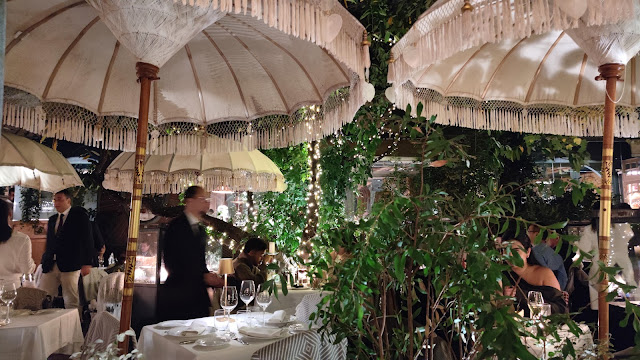


















No comments:
Post a Comment
Don't be shy: leave your comments :)